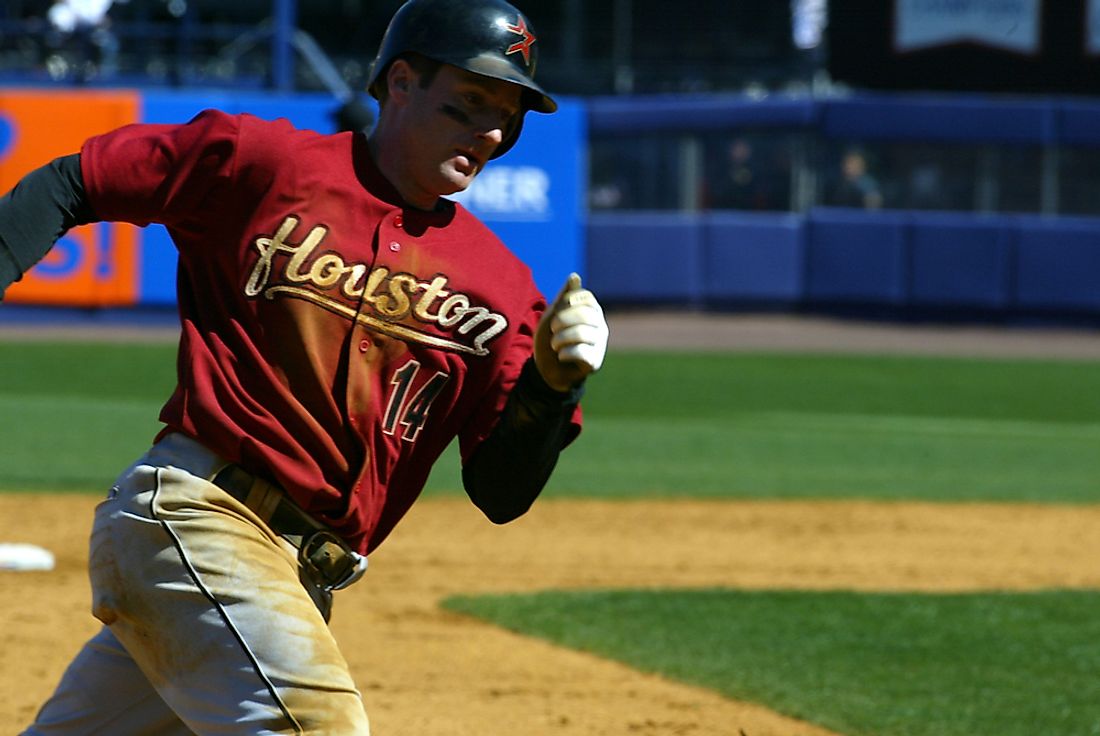When Was the Astrodome Built?

The Astrodome, located in Houston, Texas, was the first multipurpose domed stadium. It officially opened in 1965. Construction first started on the Astrodome in 1962. The Astrodome's construction was completed in November 1964. The original purpose of building the Astrodome was for baseball. From 1965-1999, the Astrodome was the home stadium of Major League Baseball's Houston Astros. It was also the venue for the NFL's Houston Oilers before they were relocated to Nashville, Tennessee. The NBA's Houston Rockets used the Astrodome during the early to mid-1970s. It has also been used for the Houston Livestock Show and Rodeo, until 2002.
The Astrodome would become a trendsetter among baseball venues. It was the first baseball venue of its kind. Other Major League Baseball teams would follow Houston's lead. The Seattle Mariners and Minnesota Twins would be the next teams to play baseball in exclusively indoor facilities.
The Need to Build the Astrodome
The Houston Astros were originally known as the Houston Colt .45s. They were named for a gun used in the days of the Old West. They played their games at an outdoor venue, Colt Stadium. Houston, Texas was the furthest south Major League Baseball had ever had a team. Houston is located on the Gulf of Mexico and has a humid subtropical climate. At the time, most teams played in humid continental climates, or in the case of California's baseball teams (Giants, Dodgers, and Angels), a Mediterranean climate. Heat and humidity served as major problems for the players and the fans. Temperatures came very close to 100 °F (38 °C) and high relative humidity. This was not the only problem. Houston is located on Buffalo Bayou. Mosquitoes were a major nuisance in a city located in a swamp-like geography. During the summer months, afternoon thunderstorms were constant which caused game delays.
Former Houston mayor Roy Hofheinz was part of a group that helped bring Major League Baseball to the city of Houston. He would also play a role in the Astrodome being built. Hofheinz took a trip to Rome and saw some of the ruins. One thing that he found was that the Colosseum once had awnings, known as velaria. The velaria were used to protect spectators from the Mediterranean sun, and from other types of weather. It was in learning about the original architecture of the Roman Colosseum that Hofheinz would gain ideas on how to build the Astrodome. The Astrodome would be a combination of those Roman awnings. However, there would be one difference. A dome would be added on top of such awnings, creating the first indoor baseball venue.
Construction of the Astrodome
During its construction, several changes were made. The dome was supposed to be much rounder. It would be modestly flattened to adjust for deformities caused by Houston's environment. The soil was another problem during construction. The city of Houston is located in a region with gumbo clay, a sticky vertisol. This type of soil has frequent shrinking and swelling, making it very unstable. This makes buildings and roads vulnerable to damage due to subsidence. Lime stabilization, a paving process, was a new type of paving process used in response to Houston's soil issues. It reduces the moisture content in the soil, and increases the strength of the soil, reducing its ability to swell dramatically.
There were still problems with the stadium. Natural grass was used. Because the grass had no sunlight, the grass died. The grass was painted green for aesthetic purposes. The paint would get on the players' uniforms. Later, translucent panels were added to the dome to let in sunlight. This was a problem for the players as fly balls in the outfield were difficult to catch. The ball could blend in with the panels, making the ball difficult to spot. The Astrodome would soon set another trend. Instead of using real grass, a synthetic baseball turf was invented. It would become known as Astroturf. Astroturf was first installed in the Astrodome in 1966 and would be used by the Astros through the 1999 baseball season.
The Astrodome Today
In 2000, the Houston Astros would move into a new stadium, Minute Maid Park. The Astros' current venue has natural grass and a roof that opens. The Astrodome is no longer used for any sporting events. The Astrodome was considered obsolete by the late 1990s. However, when it was built, it was considered an architectural masterpiece.
The Astrodome was built during the time period when the space program made its arrival in Houston, Texas. What would be known as the Johnson Space Center, an astronaut training center was built in Houston in 1961. When the Astrodome opened, the team changed their name to the Astros. This reflects Houston's role in the Space Program. It is fitting that a city where astronauts train would have a baseball team named "Astros", and a stadium known as the "Astrodome". The city of Houston was becoming a place with its eyes set on the future. It has many firsts. The first indoor baseball venue, the first indoor baseball venue to use natural grass, and the first indoor baseball venue (and the first baseball venue of any kind) to use AstroTurf. It was an example of innovation in so many ways, during a time innovation spurred by the Space Program.
The Astrodome also served as an evacuation center when Hurricane Katrina made landfall near New Orleans.
Considering what the Astrodome has represented, and its uses throughout its history, it is listed on the National Register of Historical Places. The Astrodome is now a State Antiquities Landmark, an honor bestowed to it by the Texas Historical Commission.











